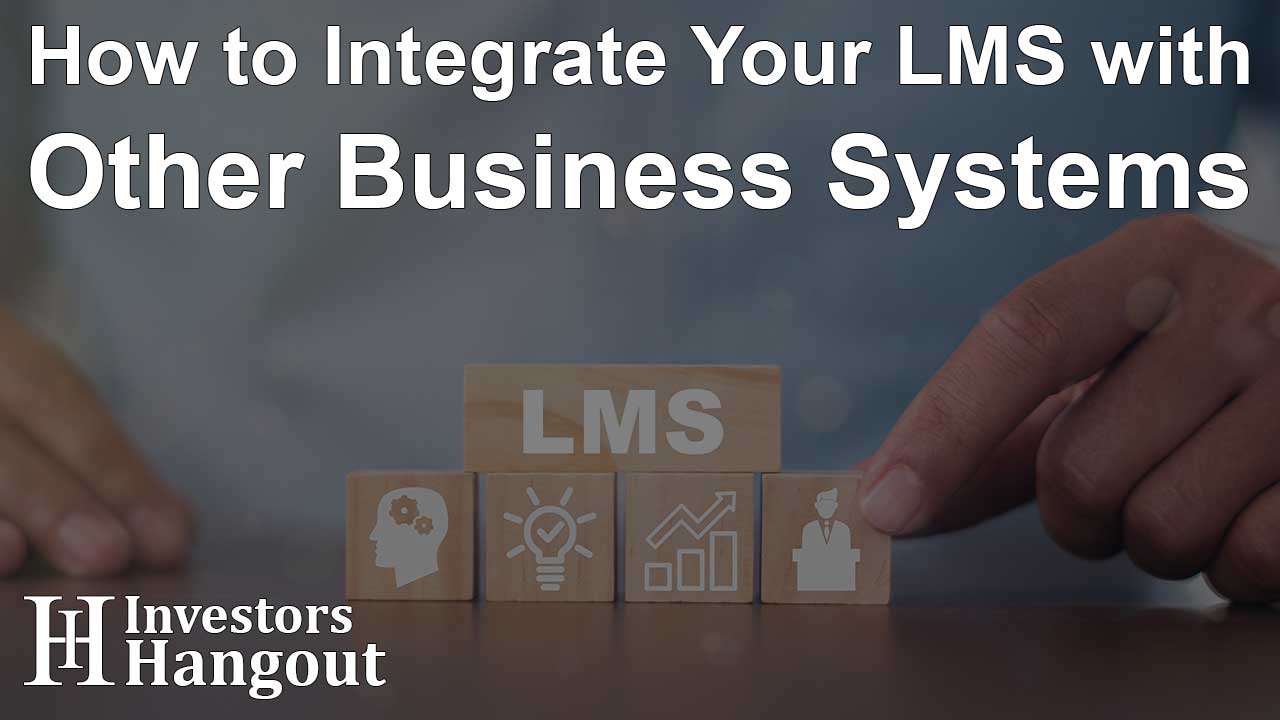How to Integrate Your LMS with Other Business Systems

How Integrating Your LMS with Business Systems Can Transform Operations
Connecting your Learning Management System (LMS) with company software can greatly boost efficiency and simplify operations while effortlessly enhancing user interaction. Pooling together applications and systems helps centralize information flow and automate tasks to foster better teamwork dynamics. In this article, let's delve into the advantages of linking your LMS with business tools and provide insights on executing these integrations successfully.
Why Should You Incorporate Your LMS?
By connecting your learning management system (LMS) with business systems, you can enjoy various benefits. The primary advantage is the eradication of data silos as it links platforms and facilitates the real-time exchange of information. This enables informed decision-making using current data and enhances overall productivity. Whether you are comparing Thinkific vs. Teachable or have already decided on anyone, this factor remains constant.
Moreover, linking your Learning Management System (LMS) with Human Resources (HR) systems allows for automating tasks related to managing users, like creating users, updating information, and removing users. This leads to a decreased need for work and less administrative burden. Moreover, when integrated with customer relationship management (CRM) systems, it enables the tailoring of learning experiences based on customer data to provide focused training materials.
Identify Integration Requirements
Prior to connecting your Learning Management System (LMS) with other platforms, it is essential to clearly outline your integration needs. Think about what kind of information should be exchanged across systems: employee details, course completion statuses, or schedules for training sessions. Also, decide whether the integration should flow in one direction or both—in other words, whether it should solely retrieve data from one system to another or enable two-way communication between them.
Select the Integration Technique
When it's time to choose the integration method that best fits your needs and skills, you'll often consider options like APIs (Application Programming Interfaces), webhooks, or ready-made connectors.
APIs enable two software programs to interact by establishing guidelines for their communication, offering a flexible solution that can address a range of integration needs. However, it may necessitate specialized development skills.
Webhooks allow for notifications when certain events happen in one system that need attention in another system. This simple integration method doesn't require programming skills and is quite straightforward to set up.
Premade connectors are integrations already built by software companies or third-party providers. These connectors usually require little setup and coding work, which greatly reduces the time needed for implementation.
Preparing for Security and Safeguarding Personal Information
When linking systems together, it's crucial to consider security and data privacy aspects carefully. Make sure to have security measures in place when connecting your LMS with other business tools to protect important data. This usually means setting up user permissions, access controls, and encryption protocols.
Follow data protection laws like GDPR or CCPA and prioritize privacy responsibilities by using anonymization methods when sharing personal information between systems.
Test and Monitor Integrations
Conduct tests and oversee the integration process to ensure smooth operation. When connecting your LMS with business systems, thorough testing is crucial. Make sure to test all the ways these systems can interact to guarantee smooth communication. Spot any issues, like data discrepancies or error messages, and resolve them promptly.
Make sure to check your integrations to keep them working smoothly and avoid any major issues or interruptions in service caused by system updates or API changes on either end that could affect the integrations you have set up with your LMS and other systems.
Consider Integration Maintenance
As technology continues to advance and change over time,' it's crucial to take into account the maintenance of integrations. Updates to software security patches and modifications in APIs can have repercussions on integrations in the future. As a result, it's important to maintain documentation throughout the integration process. This ensures that upcoming developers can easily grasp the complexities of integrations.
Be Flexible and Adaptable
When connecting your LMS to other systems, it's a good idea to take things step by step because needs can evolve over time. Start with integrations and then expand as needed, taking feedback and new requirements into account for smoother adjustments.
Summary
Connecting your Learning Management System (LMS) with business systems comes with many benefits, such as improving efficiency and enhancing user satisfaction. Make sure to define your integration needs and select the appropriate approach while keeping security and data protection in mind. During the integration process, remember to conduct testing regularly, monitor performance, and have a maintenance plan in place. By adhering to these recommended guidelines, you will be able to integrate your LMS with other systems, paving the way for new opportunities and advancement within your organization.
About The Author
Contact Olivia Taylor privately here. Or send an email with ATTN: Olivia Taylor as the subject to contact@investorshangout.com.
About Investors Hangout
Investors Hangout is a leading online stock forum for financial discussion and learning, offering a wide range of free tools and resources. It draws in traders of all levels, who exchange market knowledge, investigate trading tactics, and keep an eye on industry developments in real time. Featuring financial articles, stock message boards, quotes, charts, company profiles, and live news updates. Through cooperative learning and a wealth of informational resources, it helps users from novices creating their first portfolios to experts honing their techniques. Join Investors Hangout today: https://investorshangout.com/
